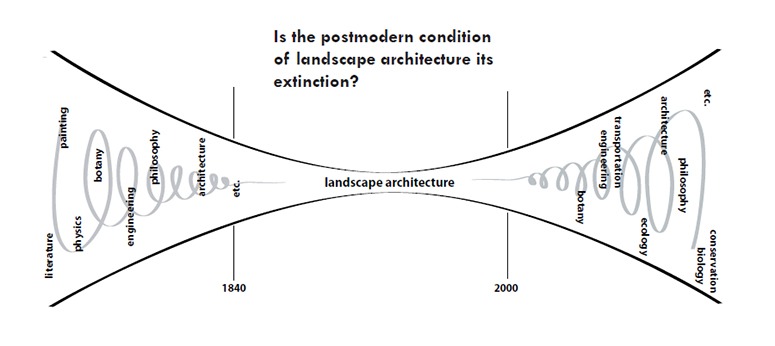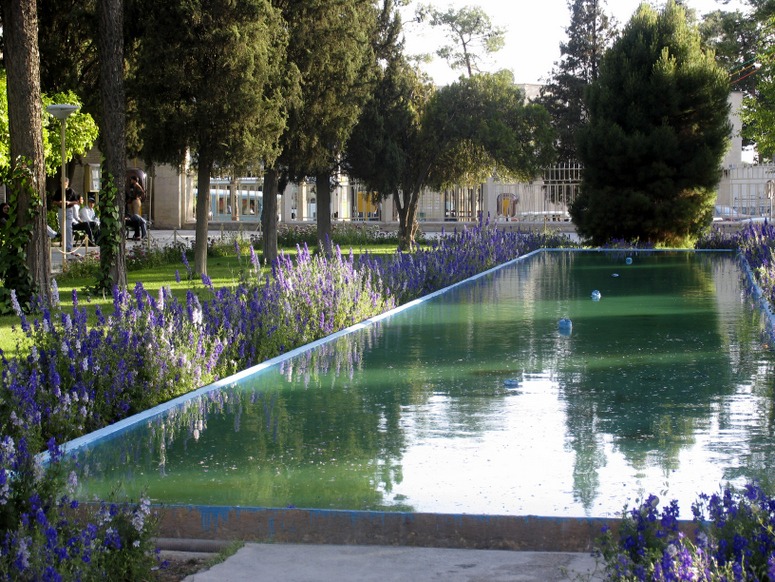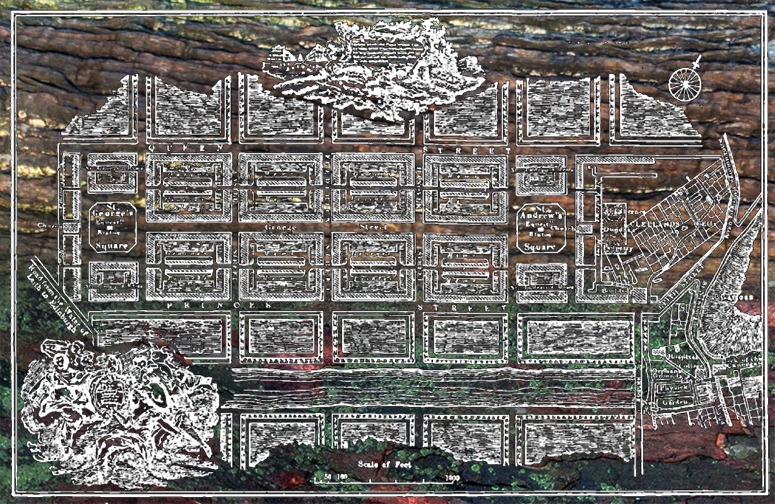
We admire Prince Charles – so why should he suddenly pounce and call me a Headless Chicken? Is this any fit way for a future king to address a future subject? No. Has he forgotten that I sent him a copy of my 1987 book on Landscape planning? Obviously. Are we still friends? Dunno.
‘Headless chicken’ is his jibe for climate change deniers. But who does he include in this category? Since I know of nobody who doubts the thermometer’s evidence for global warming, he must be attacking those who believe, as I do, that God and Mother Nature are affecting the climate as much today as they have done for the past 13.798±0.037 billion years. Do I think man is part of nature? Yes. Do I think man has some influence on climate change? Yes. Do I think man is the sole cause of climate change? No. So why call me a headless chicken? Honestly, he has spoiled my day. So did that blast of wind and rain which hit me in the park. A little global warming hereabouts would be acceptable at this time of year.
Monthly Archives: January 2014
Landscape Urbanism vs New Urbanism
Here is a great video from Rob Cowan: he draws as well as he talks – and he talks as well as he operates a camera. Should we be Landscape Urbanists or New Urbanists? Rob’s answer is ‘let’s stop wasting time on theory and get to work on solving problems’. With an equally peace-making message I would say:
New Urbanist to Landscape Urbanist: ‘You’re so right: let’s love each other and work together’
Landscape Urbanist to New Urbanist: ‘You’re so right: let’s love each other and work together’
But then I would say to both of them ‘C’mon you guys. Stop thinking in 2 dimensions: that game’s a’gonna. You guys gotta work in 4 dimensions’.
Manifesto: Is the postmodern condition of landscape architecture its extinction? or is it landscape ecological urbanism?

Landscape architecture: an apocalyptic manifesto, was the title of a landscape architecture manifesto published in 2004 by Heidi Hohmann and Joern Langhorst (and republished as ‘Landscape Architecture: A Terminal Case?’ in Landscape Architecture Magazine 95, no. 4 (April 2005): 26-45.). The original manifesto is still available as a pdf document. The Hohmann-Langhorst diagnosis was as excellent. Their prognosis was pessimistic and melancholic.
Having a nostalgic affection for manifestos, I responded with my own manifesto – and plan to mark its 10th anniversary with a revised version.
The above diagram, from the Hohmann-Langhorst article, shows the disciplines from which landscape architecture emerged and the disciplines into which they expected it to dissolve. Worldwide, this has definitely not been landscape architecture’s fate in the last decade. It has had a great many successes without, in my view, coming near to realising its full potential.
There is a great contrast between the two countries (Britain and America) which gave birth to landscape architecture as an organized profession. Landscape architecture is flourishing in the US and stagnant in the UK. It could be that the Hohmann-Langhorst article stimulated the US profession to examine its navel and engage in renewal and re-generation. In part, the regeneration has come from the body of theory known as Landscape Urbanism. Proponents have had many competition successes and advocates of New Urbanism feel themselves under threat. Andres Duany and Emily Talen have responded with a book on Landscape Urbanism and Its Discontents: Dissimulating the Sustainable City. The blurb to their book (which I have not yet read) states that ‘While there is significant overlap between Landscape Urbanism and the New Urbanism, the former has assumed prominence amongst most critical theorists, whereas the latter’s proponents are more practically oriented.’ This is despite the fact that Landscape Urbanists have done a poor job of explaining themselves. They should be grateful to Ian Thompson for his account of its Ten Tenets – and I hope his clarity will stimulate the much-needed revival of English landscape architecture. It is of interest that one of the landscape architects with the clearest vision of where the profession should be heading was born in the UK and works in the US – see this interview, in which Time Magazine describes James Corner as an Urban Dreamscaper.
Persian garden tour April and May 2014 Iran
 Persian Gardens have a 2500 years history. They overcome environmental constraints and manifest the cultures and beliefs of people living in an often-harsh climate. In collaboration with the Iranian Society of Landscape Professionals (ISLAP) offer a specialized tour and workshop called “Taste Paradise”. This is a unique opportunity for Landscape professionals, architects, botanists and Landscape historians to exchange information with Iranian specialist experts while visiting Persian Gardens. After our very first successful international tour and workshop “Taste Paradise I” in May 2013, The Cultural Landscape Association (CLA) is planning to offer another journeys (Taste Paradise II and III) for experts and professionals all around the globe, to visit and enjoy the cultural beauty of Persian Gardens. You can find More Information here: http://www.shahromanzar.org/component/k2/item/400-tour/%20400-tour#
Persian Gardens have a 2500 years history. They overcome environmental constraints and manifest the cultures and beliefs of people living in an often-harsh climate. In collaboration with the Iranian Society of Landscape Professionals (ISLAP) offer a specialized tour and workshop called “Taste Paradise”. This is a unique opportunity for Landscape professionals, architects, botanists and Landscape historians to exchange information with Iranian specialist experts while visiting Persian Gardens. After our very first successful international tour and workshop “Taste Paradise I” in May 2013, The Cultural Landscape Association (CLA) is planning to offer another journeys (Taste Paradise II and III) for experts and professionals all around the globe, to visit and enjoy the cultural beauty of Persian Gardens. You can find More Information here: http://www.shahromanzar.org/component/k2/item/400-tour/%20400-tour#
The dates are:
Taste Paradise II: April 12-18, 2014
Taste Paradise III: May 03- 09, 2014
Further information on Garden Tours in Iran and on Iranian Gardens:
http://www.gardenvisit.com/gardens/in/iran
http://www.gardenvisit.com/garden_tours/in/iran
Freshkills Park, New York City – a Landscape Urbanism project by James Corner
With luck, I will have to change my mind when it is completed. But my present view of James Corner’s design for Freshkills Park is that it is a dull design for a dull place. It reminds me of many landscape reclamation projects completed in the north of England in the 1970s. ‘Before’ photographs, intended to shock the viewer, showed heaps of mining waste with scrubby vegetation. ‘DERELICTION’ we were told. ‘After’ photographs, were of several varieties: the mouse-under-the-carpet, the dog-under-the-carpet and the whale-under-the-carpet. The ‘carpet’ was an expensively created layer of greeny-yellow turf with a sparsity of dying trees. This is what the clients wanted, it has to be said, but the results were of very little ecological, visual or social value.
Another Freshkills puzzle is why it should be regarded as exemplifying a new approach to landscape architecture. I see Landscape Urbanism as postmodern and Freshkills as a good example of McHargian Ecological Design – which was a modernist approach. James Corner’s design for the High Line is excellent – so I remain optimistic that Fresh Kills will turn out well. I re-visited Richard Wilson’s wonderful 20:50 sump oil installation at the Saatchi Gallery recently and it made me wonder about Fresh Kills. As an access-route, why not cut a glass-sided trench though the heap of rubbish so that visitors can watch the decay progress? We could see leachate dripping onto old motherboards and the occasional pair of mating rats?. Then there could be a flare to burn off a tiny fraction of the methane.
Landscape Ecological Urbanism
Landscape Urbanism is a theory of urban planning arguing that the best way to organise cities is through the design of the city’s landscape, rather than the design of its buildings…. The first major event to do with ‘landscape urbanism’ was the Landscape Urbanism conference sponsored by the Graham Foundation in Chicago in April 1997. Speakers included Charles Waldheim, Mohsen Mostafavi, James Corner of James Corner/Field Operations, Alex Wall, and Adriaan Geuze of the firm West 8, among others.
The ecological urbanism project draws from ecology to inspire an urbanism that is more socially inclusive and sensitive to the environment, as well as less ideologically driven, than green urbanism or sustainable urbanism. In many ways, ecological urbanism is an evolution of, and a critique of, Landscape Urbanism arguing for a more holistic approach to the design and management of cities.
I welcome both initiatives as perhaps the most significant contributions to landscape design theory since the landscape architecture profession was launched in the mid-nineteenth century. But much the same group of people are involved in both initiatives and I am unpersuaded by the change of name. For the construct Ecological Urbanism to have a good chance of a long and happy life its two components would need careful definitions and accounts of their intension and extension.
LANDSCAPE Architecture has established itself as a design profession and uses the word landscape evaluatively – just as ‘a work of architecture’ differs from ‘a building’. ECOLOGICAL can be used evaluatively but is more often used to describe one of the natural sciences. The compound LANDSCAPE ECOLOGY uses both words descriptively. I would appreciate a justification for Ecological Urbanism’s claim, quoted above, to social inclusiveness. Mostafavi, in his introduction to a large book on the subject, provides no evidence of an interest in the social use of urban space – unless you include his final remark that ‘Guattari’s conception of an ethics of the ecological is an inherently political project with a commitment to countering the global dominance of capitalism’. I predict not many clients will brief ecological urbanists to overthrow global capitalism. So I suggest using the term Landscape (Ecological) Urbanism for a while – and then dropping the (Ecological) when people have recognized the ecological commitment. As Ian Thompson argued in 2000 (in his book on Ecology, Community and Delight: An Inquiry into Values in Landscape Architecture: Sources of Value in Landscape Architecture) the Vitruvian aims of landscape architecture already include Ecology. We just need to bang on about this important point.
See also Gardenvisit notes on Landscape and Ecological Urbanism
Note on the illustration: it shows James Craig’s famous plan for Edinburgh New Town superimposed on ‘the bark of a tree‘. The section of Craig’s drawing north of Princes Street was built and is a great success in its response to landform and views. The section south of Princes Street was not built and hardly could have been built. The land falls into a deep valley, occupied by a loch when the plan was drawn, and then rises steeply to Edinburgh Castle Rock – which is shown on the plan.

